Picture this: a curious newcomer lands on a crypto exchange, ready to buy their first Bitcoin. But instead of a clear path, they’re hit with flashing charts, cryptic wallet addresses, and buttons labeled "gas," "staking," and "bridging." Overwhelmed, they leave — not because blockchain failed, but because the experience did.
This is the quiet crisis stalling mass adoption. Blockchain holds immense promise, but its complexity is a wall. UX isn’t about sleek buttons or stylish colors — it’s about clarity, trust, and helping users navigate a system that feels foreign by default. In crypto, where one wrong click can cost thousands, design isn’t a luxury — it’s a lifeline.
In this article, we’ll explore why UX is blockchain’s critical frontier, how design influences behavior and trust, and what separates confusing platforms from those ready to welcome the next billion users.
What Is Crypto Design?
The crypto design focuses on the interface (UI), user experience (UX), and other tasks related to interaction with cryptocurrency and blockchain-powered applications.
It must create intuitive interfaces that enhance user experiences, simplify complexity, and foster trust, while considering security, transparency, decentralization, and ease of use, which are central to traditional product design.
Crypto design includes basic components:
- UI Design: Designing appropriate aesthetics with practical purposes for blockchain platforms. The use of icons enhances the visual appeal and usability of blockchain platforms.
- UX Design: Management of user’s impressions during their interaction with the system from registration to every subsequent interaction.
- Interaction design: Creating step-by-step guides on how to perform more complicated activities, such as sending transactions or interacting with decentralized apps, so that they become self-evident.
Cryptocurrency Web Design Elements
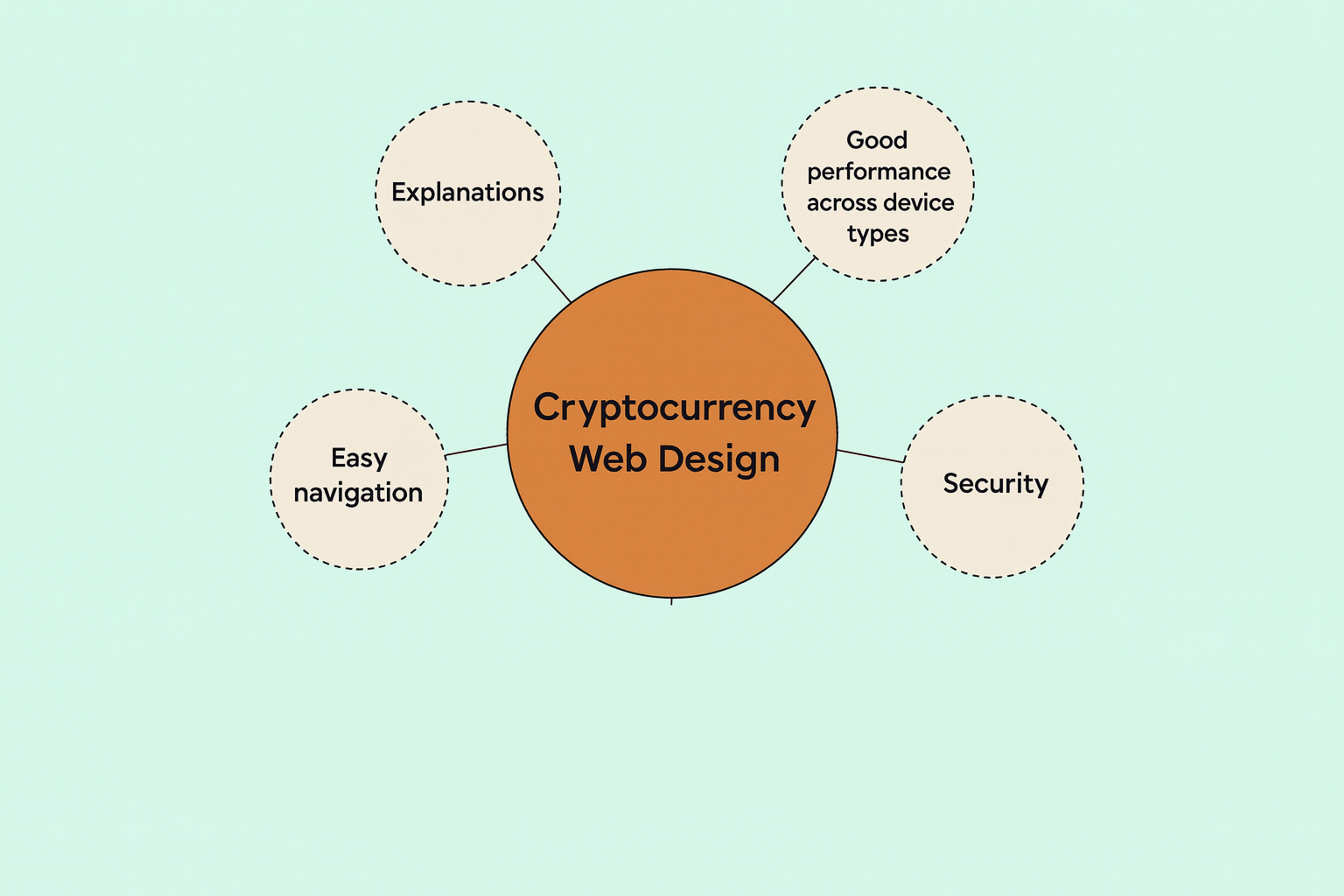
The innovative crypto design captures visual appeal and caters to sophisticated users and crypto novices’ requirements.
The Need for Good Design in Crypto
Blockchains and cryptocurrencies have marked their entry into the digital spectrum, with decentralized apps (dApps) becoming popular across sectors.
Nonetheless, these technologies often come with a bulging challenge for users, from dealing with technical terms and security issues to complicated graphical user interfaces.
Although blockchain technology has immense prospects, it is only with a seamless design that these systems can be made user-friendly and comprehensible to a large audience.
Adopting current design trends is crucial to enhance user experience, attract users, and streamline complex processes, leading to innovative and user-friendly crypto platforms.
Incorporating user research is essential to understand user needs and create effective crypto designs that are intuitive and user-friendly.
The primary objective of this article is to provide answers to the question of why crypto design is essential to discuss. Focus areas include strategic branding and visual identity development that can enhance usability on blockchain and cryptosystems, increase security, and attract more users regardless of their levels of expertise.
Blockchain UXD

The Complexity of Blockchain and Crypto Platforms
Blockchain is complex by design. It runs on distributed networks and cryptography. Many tasks involve several steps and new terms.
Sending a transaction can feel hard. Smart contracts add more rules to learn. Even gas fees confuse new users. The learning curve is steep for beginners.
Crypto moves fast and adds features quickly. Many tools expect knowledge of finance and tech. Wallets now let you buy, sell, and trade coins and NFTs. Without clear guidance, people get stuck. Progress slows when systems feel unclear.
Good design fixes this. Educational platforms can guide users with simple flows and helpful content. Clear headings and plain language reduce friction.
Strong learning design breaks big tasks into easy steps. People at any skill level can follow along. When users understand the process, their confidence grows. That is how more people adopt blockchain tools.
The Importance of User-Centered Design in Crypto
Put users first. Their needs come before everything else. That is not optional.
Blockchain tools are complex and fast-changing. The learning curve is steep. That makes user-centered design essential.
Study strong crypto web designs for ideas. Sleek layouts signal trust and professionalism. They also make products more engaging and intuitive.
Focus on user goals and pain points. Ask what outcomes people want from your platform. Design each step to support those outcomes.
Many crypto sites feel chaotic. New layouts appear daily. Jargon and vague maps leave people unsure where to click. Clear, step-by-step guidance is often missing.
For newcomers, the problem is worse. Many have little experience with blockchain. Without friendly, clear interfaces, they quit fast. Thoughtful design keeps them engaged.
Choose clarity over clever tricks. Guide, explain, and remove friction. That is how adoption grows.
User Needs and Business Objectives
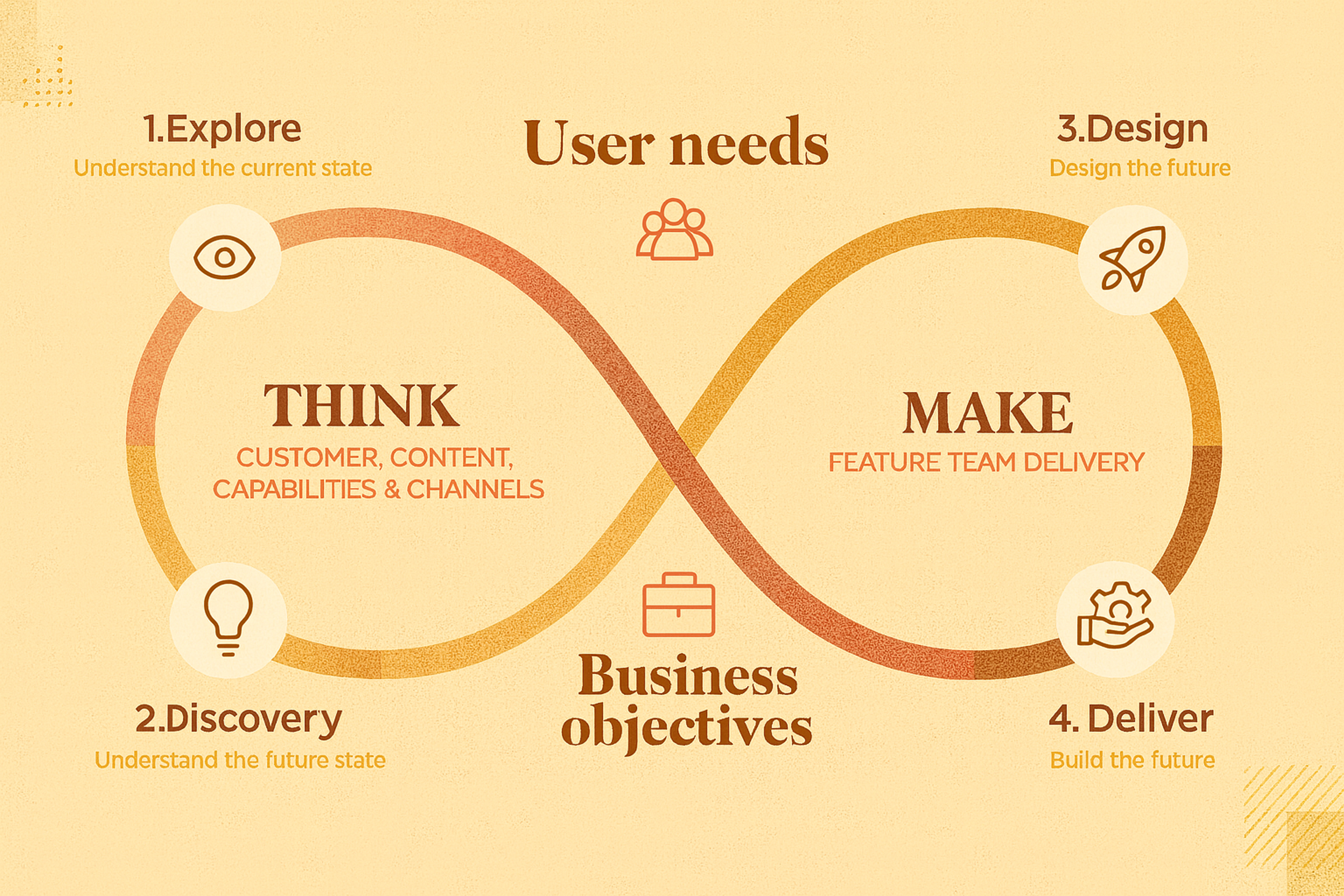
Challenges in Crypto Design
User experience, or UX, poses issues of its own when designing crypto platforms — and these issues tend to be multi-faceted. These systems encounter several distinct challenges, including user interactions and transactions involving funds. Effective design elements are crucial for enhancing user feedback and usability during activities like sending and receiving funds.
Security
Protecting the user is critical regarding blockchain technology because it is immutable and decentralized. Ensuring a secure platform with features like two-factor authentication and private keys is essential for protecting user accounts, although these measures can be cumbersome from a usability perspective.
User Education
Learning about smart contracts, wallets, and gas fees can be overwhelming for a novice. Crypto platforms must explain these concepts clearly while simplifying the processes that users need to navigate, avoiding overwhelming or confusing people.
Complexity of Transactions
Many users find wallet setup and posting transactions too complex, especially those without tech skills. Multi-step flows confuse and cause drop-offs.
Responsive design and micro-interactions can ease the path. Subtle cues like progress states, taps, and confirmations make actions feel smooth and clear.
Designers chase a tough balance: rich features with simple use. That balance is hard to get right. Ignore these issues, and churn will rise. Fix the friction early to grow blockchain adoption and keep users.
Blockchain UX
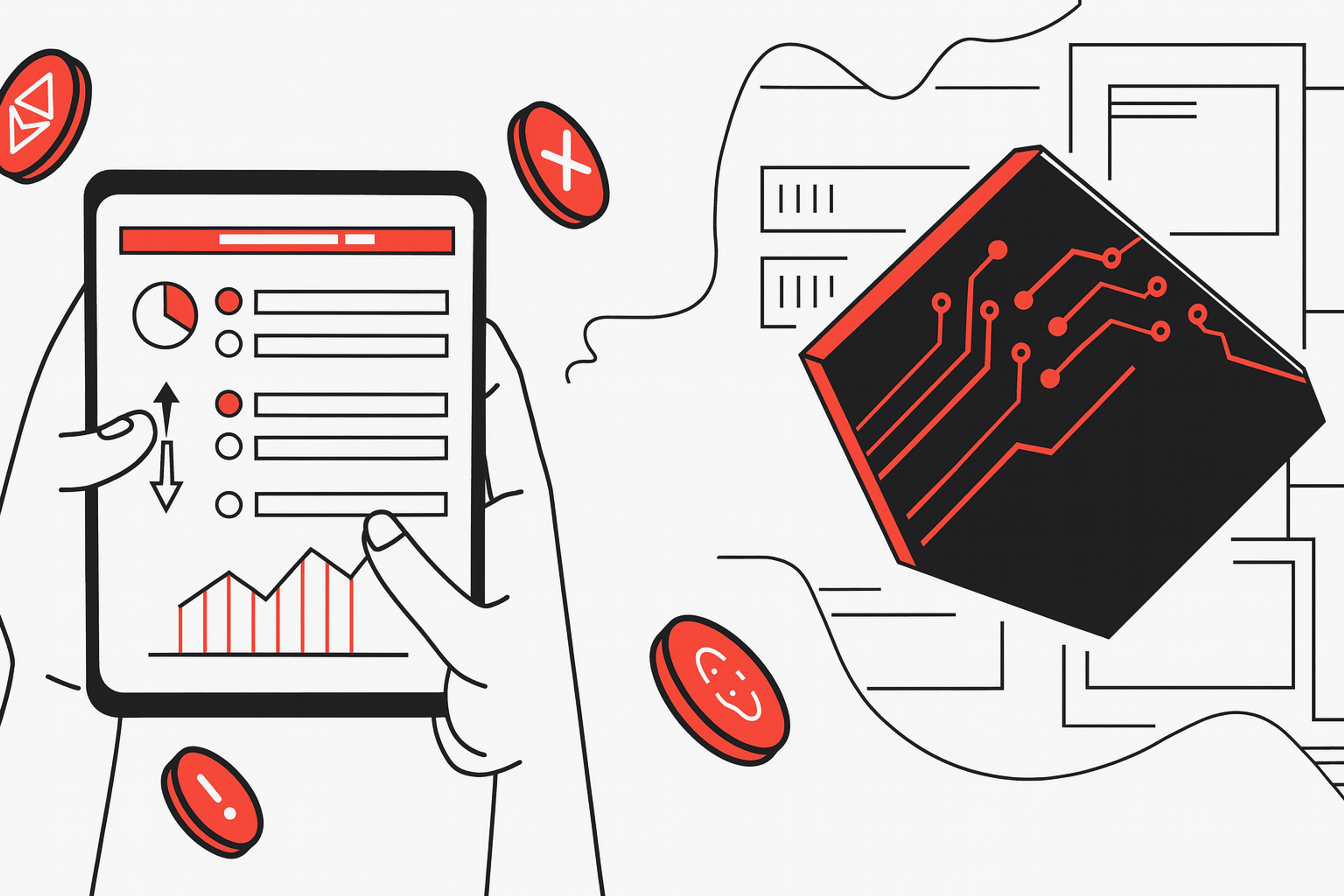
Best Practices for Blockchain and Crypto UX Design
To accommodate user experience and safety, here are some steps to take regarding crypto design:
Creating various digital products, including mobile apps, is essential to enhance user experience and showcase comprehensive technological solutions.
- Simplify the User Interface (UI): Make sure the UI is tidy, aesthetically appealing, structured, and intuitive. Every word in the interface should be simple, allowing easy navigation to essential details like balances, fees, and transaction history.
- Effective Onboarding: Most users are unfamiliar with blockchain and cryptocurrency. Thus, an in-depth, bounded onboarding flow is a necessity. In an organized manner, guide the users through the entire process, from wallet creation to transactions and asset securing.
- Security Without Intrusion: Ensuring a secured platform for the user is vital, but overwhelming them with features can impact their interaction. Essential tools like a password keeper or a backup made-easy option should be available with no added effort and should not affect the user experience.
- Clear Transaction Flows: Confirming transactions and the gas fees associated with them can be extremely complicated for users. A strong crypto platform should provide an adequate solution that addresses these issues in a form users can grasp easily at each point.
Real-World Examples of Good Crypto Design
Many blockchain platforms already show the power of good design. Well-designed exchanges improve the experience and attract more users.
NFT marketplaces also raise the bar with smart design. Some use 3D views for digital art and dynamic color schemes. Visual appeal matters when people choose where to trade NFTs.
Let’s look at a few examples:
Coinbase
Known for its clean and minimalistic interface, Coinbase provides a user-friendly way to buy, sell, and store cryptocurrencies. Its design focuses on making the onboarding process simple and intuitive for beginners while offering more advanced features for seasoned crypto enthusiasts.
Coinbase uses large typography to enhance readability and draw attention to important information, reducing cognitive load and improving user experience, especially when dealing with complex data and transactions.
MetaMask
As a browser extension wallet, MetaMask has effectively streamlined the process of interacting with decentralized applications (dApps). The interface is intuitive, and the onboarding process explains key features without overwhelming users.
MetaMask allows users to switch between different blockchain networks seamlessly, enhancing the overall user experience.
Grayscale
Grayscale is a standout example of how strong design can elevate a crypto brand. As one of the world’s largest digital asset managers, Grayscale needed a bold, modern identity that matched the transformative potential of blockchain technology.
We helped reimagine their brand and digital experience, creating a sleek, intuitive platform that speaks to both seasoned investors and crypto newcomers. With a focus on clarity, trust, and visual sophistication, the Grayscale redesign demonstrates how thoughtful UX and branding can demystify complex financial products and make the crypto space more accessible and engaging.
Grayscale redesign by Clay
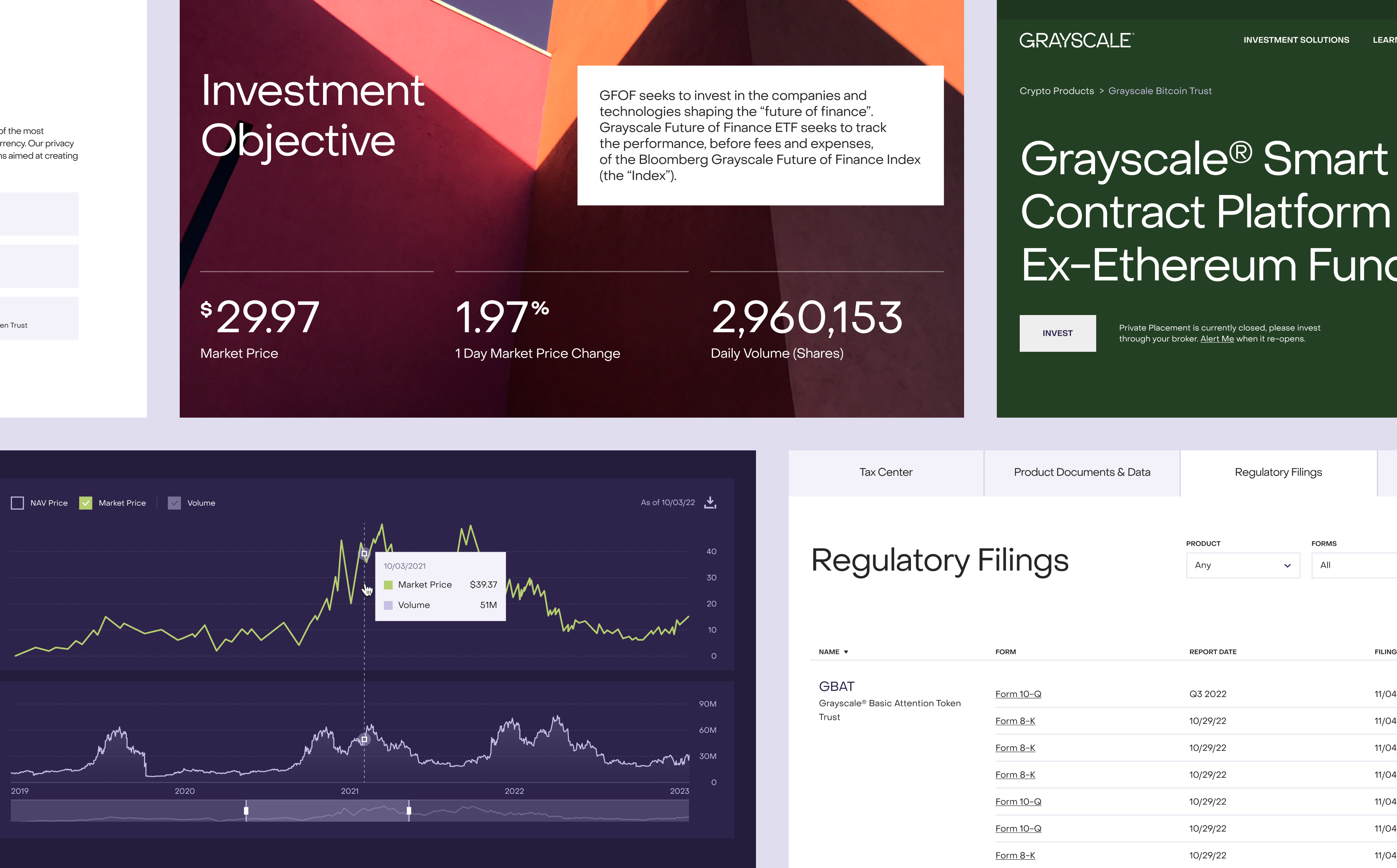
The Future of Crypto Design and User Experience
The advancement of crypto design is synchronous with the development of new blockchain technology. As blockchain systems gain popularity, their user experience will remain vital in ensuring large-scale acceptance. A clear and compelling vision for the future of crypto design is essential to build trust and connect with users, simplifying complex ideas and making them more accessible.
Front-end development services play a crucial role in bringing these designs to life, transforming creative ideas into functional digital products.
- Web3 and dApps: The application of decentralized governance systems will require increased migration toward dApps. Decentralized UX will need to address multi-layered interactions that exist in decentralized networks. These interactions must be made more straightforward without undermining the underlying technology.
- DeFi (Decentralized Finance): DeFi systems with heavily advanced financial products will need stronger functional design frameworks that assist users in easily and securely working with complex and advanced financial instruments.
The future of crypto UX will be design-led, where simplicity marries blockchain functionality.
FAQ
Is It Possible to Create My Own Cryptocurrency?
Yes. You can launch a new blockchain or create a token on an existing chain like Ethereum, Binance Smart Chain, or Solana.
How Much Does It Cost to Create My Own Crypto?
Costs vary from a few hundred dollars for a simple token to millions for a custom blockchain. Expenses depend on development, security audits, marketing, and legal compliance.
Is Creating Your Own Crypto Profitable?
It can be if the token solves a real problem, gains adoption, and builds trust. Many projects fail due to lack of utility, regulation, or poor execution.
How Do I Create My Own Crypto Token?
You can use smart contracts on platforms like Ethereum (ERC-20) or Binance Smart Chain (BEP-20). Tools and templates exist, but security audits are critical.
How Do I Create My Own Blockchain?
Building a blockchain requires deep programming knowledge. You must design consensus, nodes, and security. Frameworks like Cosmos SDK or Substrate help, but costs and complexity are high.
Read more:
Conclusion
Blockchain and cryptocurrency technology have immense potential but must cater to every user, novice or expert, through intuitive design. Streamlined user-focused principles, optimizing transparency, and reducing complexity can help cryptosystems build the trust needed for adoption and sustained engagement.
With blockchain transforming many industries, crypto design will be central to popularizing these technologies. A sleek and professional look will enhance user perception and retention, emphasizing that clean and fast websites are essential for building customer trust in a complex industry. Design will need to be prioritized at every stage of development for the crypto space to realize its full potential.
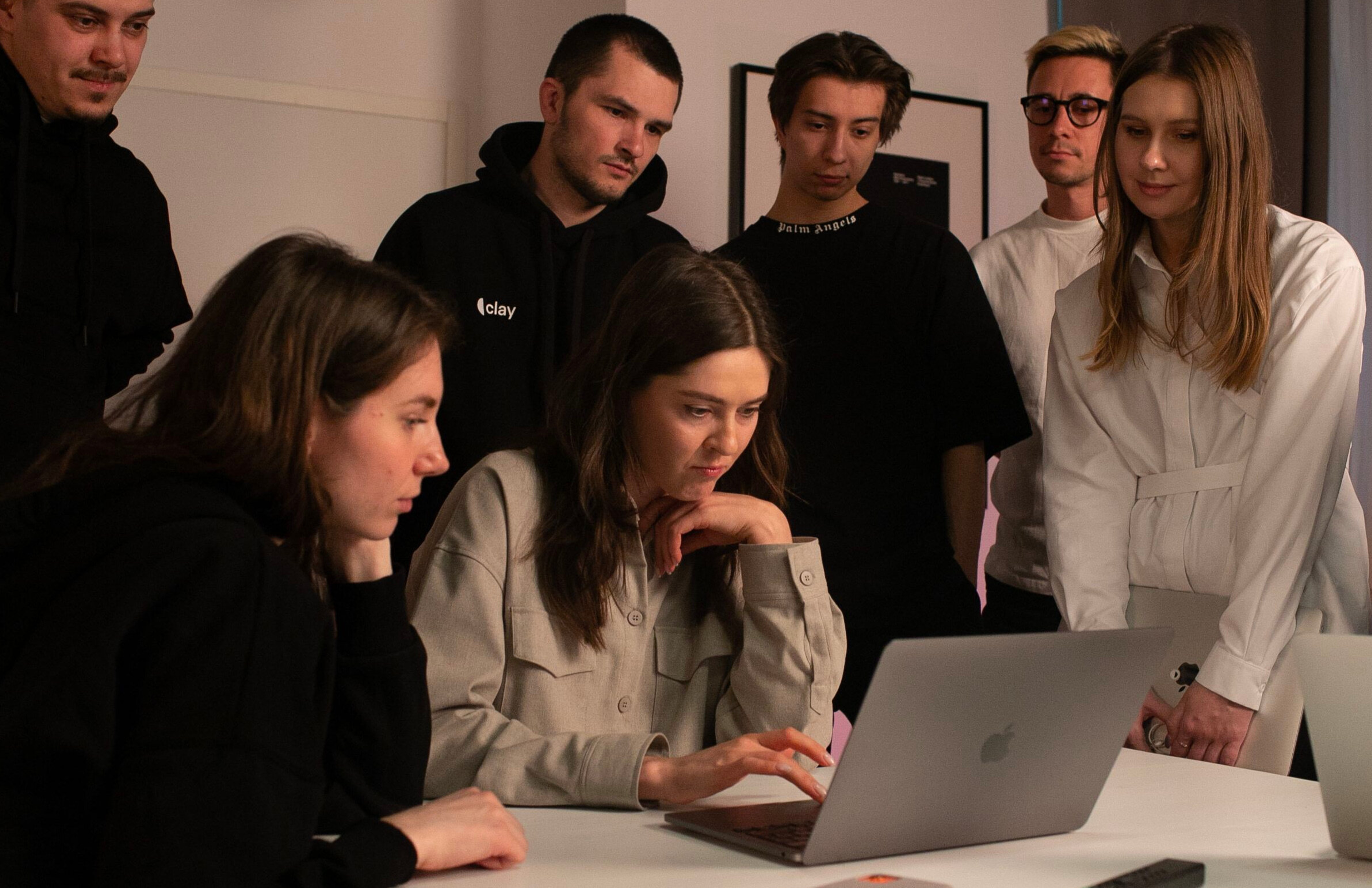

About Clay
Clay is a UI/UX design & branding agency in San Francisco. We team up with startups and leading brands to create transformative digital experience. Clients: Facebook, Slack, Google, Amazon, Credit Karma, Zenefits, etc.
Learn more

About Clay
Clay is a UI/UX design & branding agency in San Francisco. We team up with startups and leading brands to create transformative digital experience. Clients: Facebook, Slack, Google, Amazon, Credit Karma, Zenefits, etc.
Learn more


